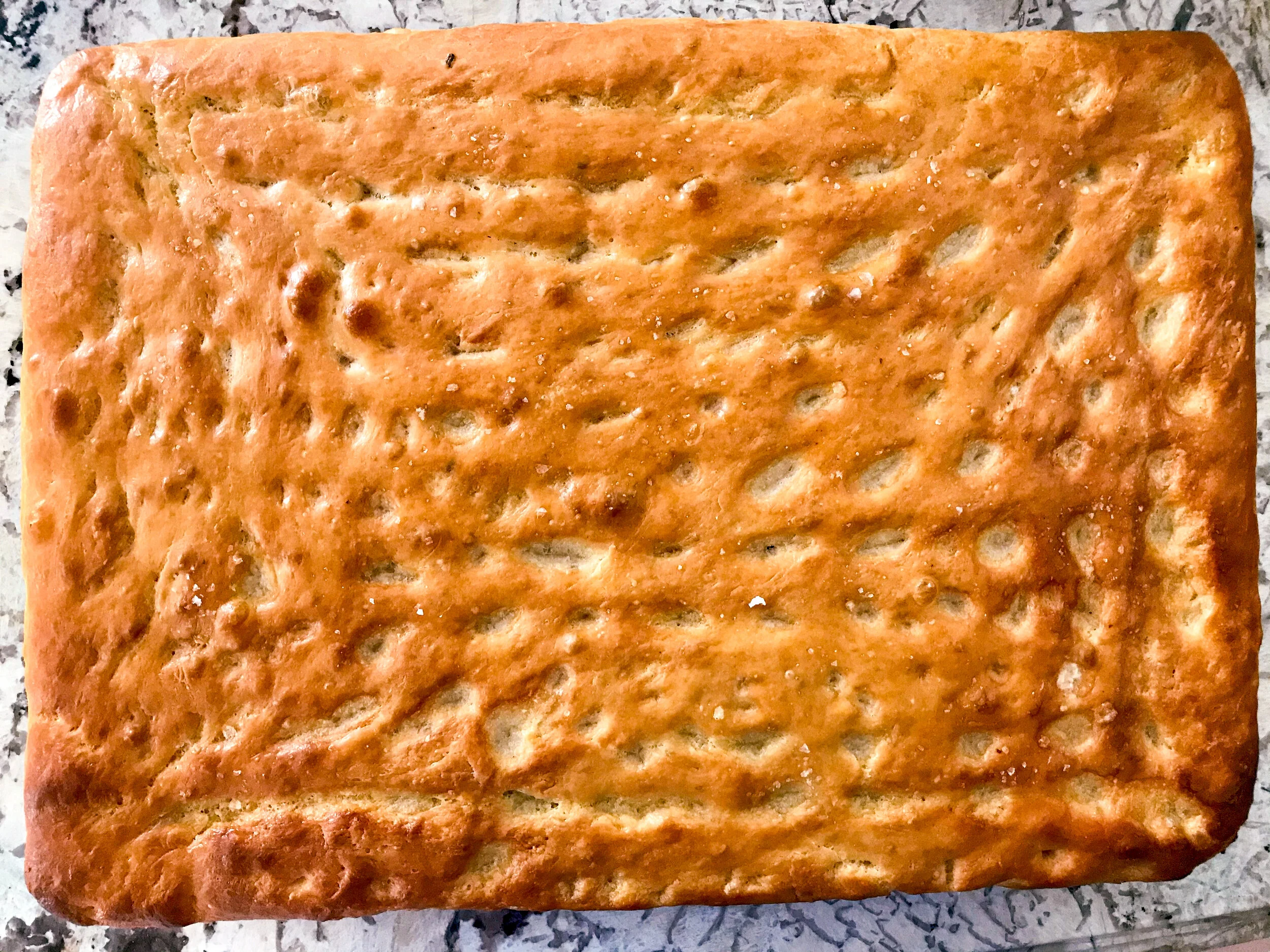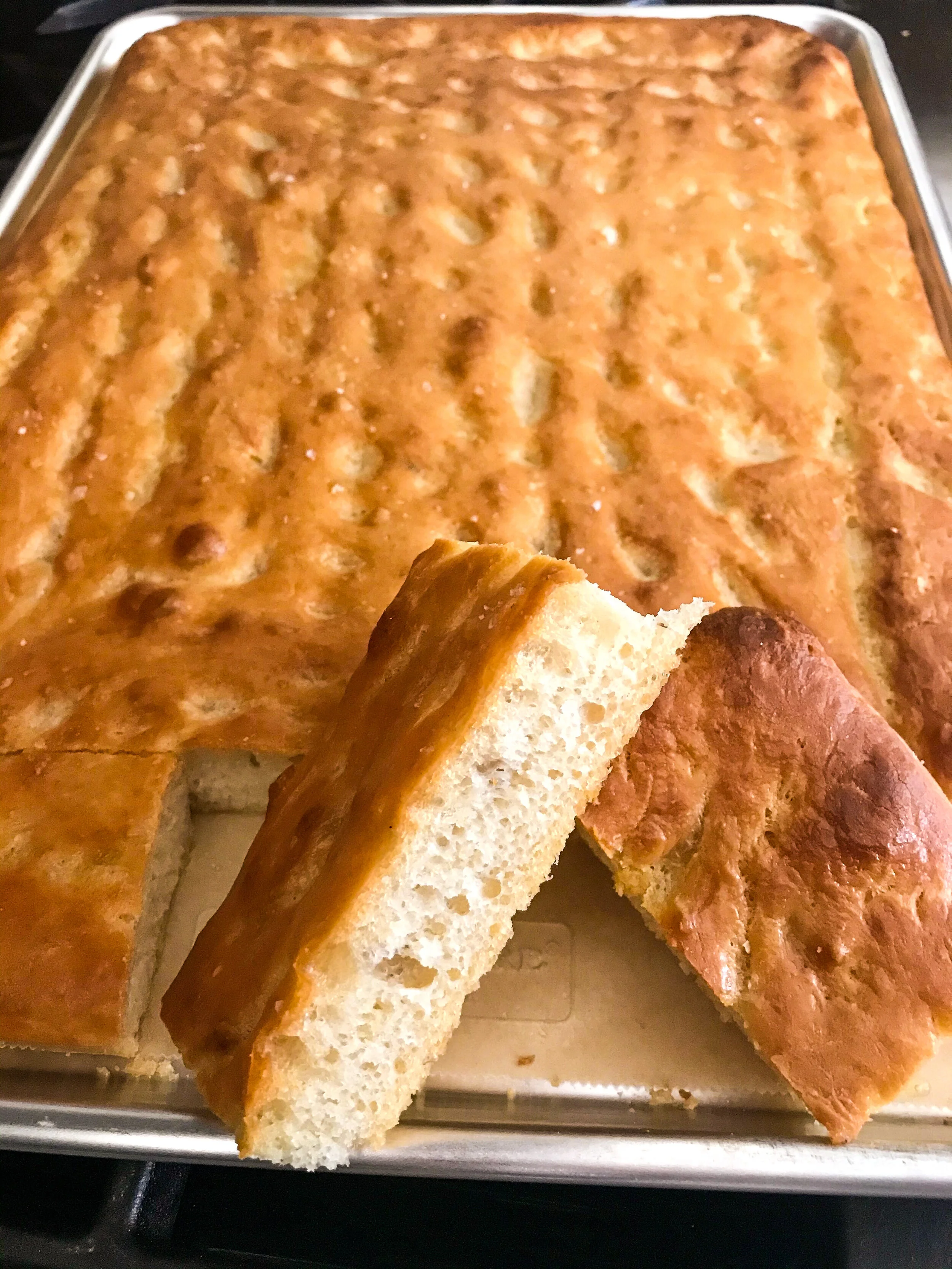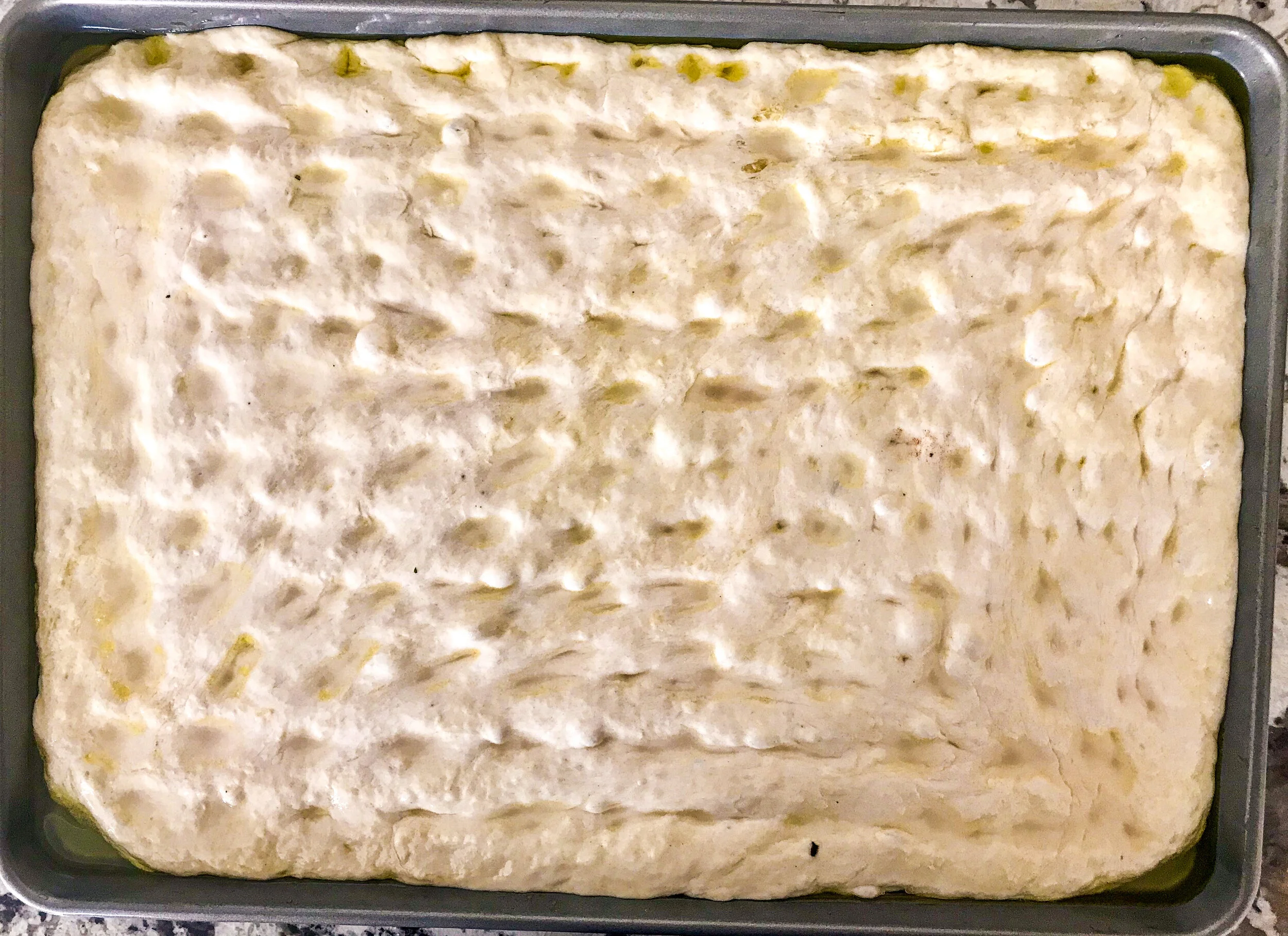Ligurian focaccia, the fluffiest flatbread
The Italian flatbread. I don't often eat focaccia, funnily enough, but whenever I do, I always feel like I should be eating it more often, because it's a perfect mix of puff, air and bounce in a bread.
I simply love yeasted breads. It also feels so simple in what it offers, but packs in a lot of flavor thanks to its fat content, and salt. It's a bread that I consider to be eaten outside more often than made at home, and now that I know the difference, it's rarely Ligurian style. The home of focaccia, since the Etruscans civilization of Ancient Italy. So I guess here's to my first Ligurian style and homemade focaccia experience.
Liguria is located in northwestern Italy, on the Mediterranean coastline, also known as the Italian Riviera. It has a mixture of almost all terrains in one, making it a quintessential landmark so to speak -- the Ligurian sea, rolling hills, mountainsides, and the Mediterranean greenery -- it simply sounds like heaven, and a luxurious yet humble realm. I have never been to Liguria, but I would love to visit one day. I want to explore the hillsides, taste the olive oil, experience the food and wine with all it's gloriousness, but take in the region for its beauty, its simplicity and antiquity. It is no longer the lush, luxurious, expensive scenes, but the real, historical, yet wondrous landscapes that make up what good travel is today, more so than I think before. It is why I wanted to experience making Ligurian focaccia. I want to understand the taste of this simple flatbread from the place it is most heavily associated with. A bread that was/is primarily used for laborers who needed an easy, yet filling enough snack that would not set them back with fatigue or stuffiness (we all know that feeling). Enjoyed with a glass of white wine, of course. That's how I want to experience it.
Italy is my travel haven, it has been since my childhood. It's where my dad used to say he'd want to retire to, when we were growing up. Those words have always resonated with me, even if they no longer mean something to him, because times have changed, understandably. Our environment has changed, and expectations are different. Yet, those words have always held weight, alongside my long years in high school and university studying Art History, learning so much that Italian art and architecture has to offer, centuries back. I believe it to be a big reason why I enjoy visiting that country so much, and wanting to be able to return to it when I can. There is always so much more to see, and I haven't even experienced half of what I studied in depth. At one point, I did believe I would be a gallery curator, it was one of many dreams I had during the early years of college.
I haven't returned for many years, but living in Europe at the time, Italy was where we could always turn to for family vacations, and never go wrong. My dad would always say that no matter where you went -- North or South, the sea or inland -- you could never go wrong in Italy. He was right. I love to travel, and I am grateful that I am able to travel as much as I do, but Italy is somewhere I long to return to, however, sometimes it seems selfish to always mention one place repeatedly, which is why there has been a long gap. There's so much to see, and having lived in North America for a while, it just means it's more worth it now. I want to go back to the country my dad loved, or may still love.
One big attribute to come out of the Ligurian region is its olive oil. An essential fat that makes focaccia what it is. Ligurian focaccia is different to the commercial versions and what recipes have evolved into, with the slightly airier and thicker styles. The original remains a thinner bread, no higher than about 2cm, making it a little flatter than most focaccia's out there. However, one ingredient that is important to how focaccia is made, and what lends to the texture and stretch of this bread is olive oil. The olive trees coat the mountainsides and rolling hills of the region, making it a harsher landscape to harvest, but they have it down to a science thanks to nets that are sewn all across the earth beneath the trees. I learnt these facts surrounding their olive trees and oil production thanks to Samin Nostrat's latest series on her book, Salt Fat Acid Heat. That show has taught me a lot. It sounds simple, but in fact, watching cooking shows and the likes of your favorite chefs actually carry a lot of weight in your kitchen experiences and education. There is a difference and easy pleasure to hear and see what is being prepared for, or talked about. That can go a long way for me, other than just reading a recipe, or a book, because I am a visual learner. I know that olive oil has three important taste characteristics to it: fruity, spicy and bitter. All three notes must hit your palate, otherwise, it is not a good olive oil. Salt and oil will affect your overall taste of the bread, so invest in the quality. It does not need to be unaffordable, but I care about what goes into your food, how it is made, and taste. Taste is the ultimate seal. It is like the kiss of food.
In similar fashion, I believe there is an art to making bread, and it is quite a simple process for most, but bread making for me is a sensual experience. My sister watched me make this focaccia the other day, and commented at how I was gently stretching it out and letting it move under my palm. You need to love your dough, but you also need to pour yourself into it when kneading. The final stage is the tenderness and stretch of the dough. Your knuckles and hands play a pivotal role in shaping, allowing the texture to define and take shape, but also bond. As you can see in the above images, there is quite a bit of oil that needs to drench your dough, this helps with the stretching, but your palms and fingertips do a lot of the heavy work. You need to feel your bread - you may laugh - but there is a sensuality in bread making. It's based upon touch and smell. Feeling your dough progress, until stretched enough, which takes the course of 20-30mins, is how you measure success. Going through this experience opens a window to understanding dough and bread making a little deeper each time. I am always learning with every baking experience I encounter, and I take those key notes away for the next time.
Understand that for some cooking and baking are a form of sustenance, while for others, it is more than sustenance. For me, I love to be enveloped by all five senses and through that, understand the key elements of food - fat, salt, acid, and heat as Samin Nostrat beautifully illuminated for us with her wonderful explorations of food.



